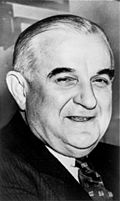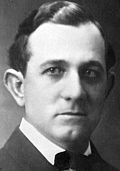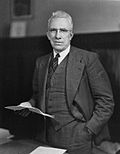November 5, 1940 | ||||||||||||||||||||||||||||||||||||||||||||||||||||||||||||||||||||||||||||||||||||||||||||||||||||||
34 of the 96 seats in the United States Senate 49 seats needed for a majority | ||||||||||||||||||||||||||||||||||||||||||||||||||||||||||||||||||||||||||||||||||||||||||||||||||||||
|---|---|---|---|---|---|---|---|---|---|---|---|---|---|---|---|---|---|---|---|---|---|---|---|---|---|---|---|---|---|---|---|---|---|---|---|---|---|---|---|---|---|---|---|---|---|---|---|---|---|---|---|---|---|---|---|---|---|---|---|---|---|---|---|---|---|---|---|---|---|---|---|---|---|---|---|---|---|---|---|---|---|---|---|---|---|---|---|---|---|---|---|---|---|---|---|---|---|---|---|---|---|---|
| ||||||||||||||||||||||||||||||||||||||||||||||||||||||||||||||||||||||||||||||||||||||||||||||||||||||
 Results of the elections: Democratic gain Democratic hold Republican gain Republican hold Progressive hold No election | ||||||||||||||||||||||||||||||||||||||||||||||||||||||||||||||||||||||||||||||||||||||||||||||||||||||
| ||||||||||||||||||||||||||||||||||||||||||||||||||||||||||||||||||||||||||||||||||||||||||||||||||||||
The 1940 United States Senate elections coincided with the election of Franklin D. Roosevelt to his third term as president. The 32 seats of Class 1 were contested in regular elections, and special elections were held to fill vacancies.
Contents
- Gains, losses, and holds
- Retirements
- Defeats
- Post-election changes
- Party switches
- Change in composition
- Before the elections
- Election results
- Race summaries
- Special elections during the 76th Congress
- Races leading to the 77th Congress
- Closest races
- Arizona
- California
- Connecticut
- Delaware
- Florida
- Idaho (special)
- Illinois (special)
- Indiana
- Kentucky (special)
- Maine
- Maryland
- Massachusetts
- Michigan
- Minnesota
- Mississippi
- Missouri
- Montana
- Nebraska
- Nevada
- New Jersey
- New Mexico
- New York
- North Dakota
- Ohio
- Pennsylvania
- Rhode Island
- Tennessee
- Texas
- Utah
- Vermont
- Vermont (regular)
- Vermont (special)
- Virginia
- Washington
- West Virginia
- Wisconsin
- Wyoming
- See also
- Notes
- References
Although Roosevelt was re-elected, support for his administration had dropped somewhat after eight years, and the Republican opposition gained three seats from the Democrats. However, the New Deal Democrats regained firm control of both the House and Senate because Progressives dominated the election. [2] The Minnesota Farmer–Labor Party also disappeared from the Senate, as Henrik Shipstead joined the Republican party and Ernest Lundeen had died during the preceding term. Senator Harry S. Truman of Missouri was elected to his final term in the Senate in 1940. Truman resigned in 1945 to serve as President Roosevelt's third Vice President.
Republicans later gained an additional seat through an appointment in Colorado.





































































































